
|
Rudrasimha ruled until S. 119, the last date for which we have coins of his, and was succeeded by Dāmazāda's son Jīvadāman.
Jīvadāman's coins also fall into two varieties characterized by variations in the legend. One variety uses Dāmajādasriya as the spelling for
Dāmazāda's name, reading:
Rajno mahakshatrapasa Damajadasriyaputrasa Rajno mahakshatrapasa Jivadamna.
This variety seems to belong to the group that I am hypothesizing was struck at mint A, where Dāmazāda's name had been spelled Dāmajādasriya on
Dāmazāda's coins and where the patronymic had been spelled Rudradamnaputrasa. The other variety uses the genitive case (Jivadamasa) and spells the father's
name as Damajada:
Rajno mahakshatrapasa Damajadasaputrasa Rajno mahakshatrapasa Jivadamasa.
Under my hypothesis, these coins must have been struck at mint B, where Dāmazāda's name had been spelled Dāmaysāda (i.e., Dāmazāda,
a slight variation from Dāmajāda, where the compound conjunct ysa instead of ja had been used to represent the sound za) and the patronymic had been spelled
Rudradamaputrasa.
I have already mentioned the problem of Jīvadāman's multiple reigns on the Rudrasimha page. Rapson's idea was that Jīvadāman may have
succeeded Dāmazāda and had a reign around S. 100-103, or may have attempted to overthrow Rudrasimha during S. 110-112. His main evidence for this was a
coin of Jīvadāman at the British Museum on which the date could not be read, but which Rapson speculated might be either 100-103 or 110-113. However, it can
be shown (see below) that Rapson's coin must have been dated 119. Thus Jīvadāman had just one reign.
So far, that reign has been thought to be 119-120, as these were the only dates for which coins were known. However, the earliest date known for his successor,
Rudrasena I, was 121. So there has been some ambiguity about whether the succession took place in 120 or 121. Below is a coin of Jīvadāman dated 121. This
shows that Jīvadāman's reign was 119-121 and that Rudrasena I came to the throne only in 121 (199 CE).
|
 |
Rudrasimha I |
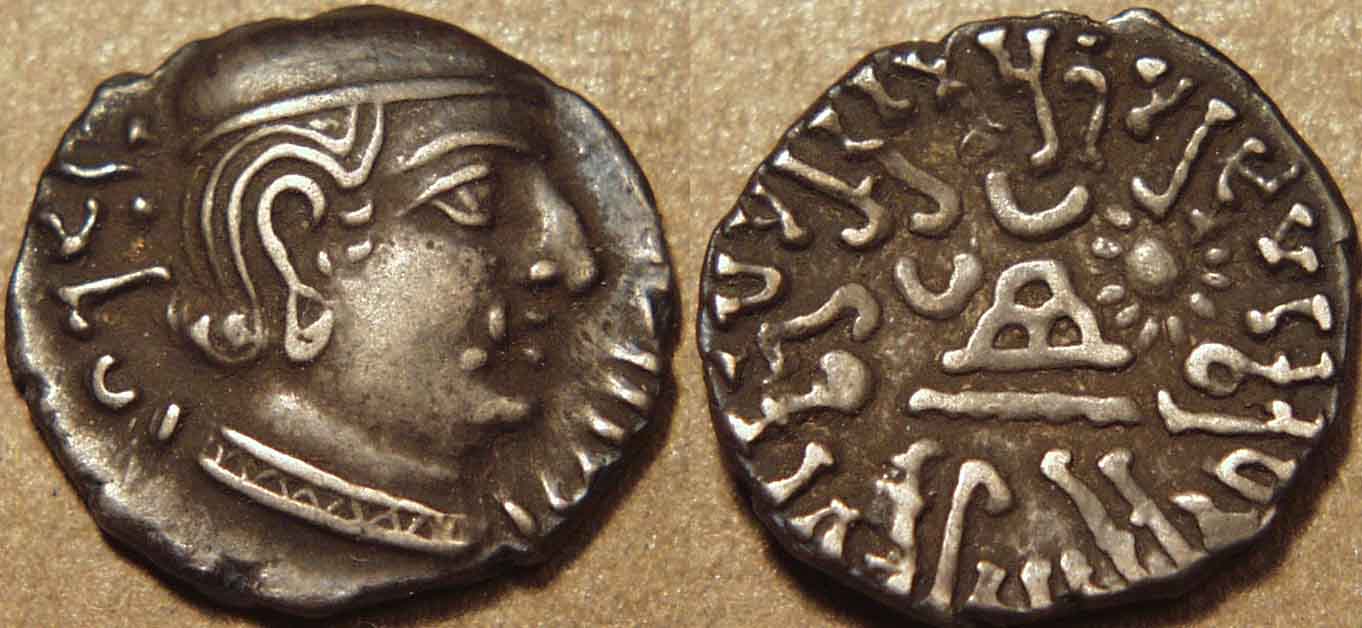
|
Rudrasimha I, as mahakshatrapa, silver drachm, "mint A"
dated S. 119 (=197 CE)
Head of king right, blundered Greek legend around /
Chaitya (3-arched hill), river below, crescent moon and sun above, Brahmi legend around
Rajno Mahakshatrapasa Rudradamnaputrasa Rajno Mahakshatrapasa Rudrasihasa
|
 |
This coin is carried over from the Rudrasimha I page. It is a silver drachm of Rudrasimha dated 119 and is an important
piece of evidence in the proof that Rapson's theory that Jīvadāman may have had two reigns was incorrect. |
 |
 |
 |
Jīvadāman |
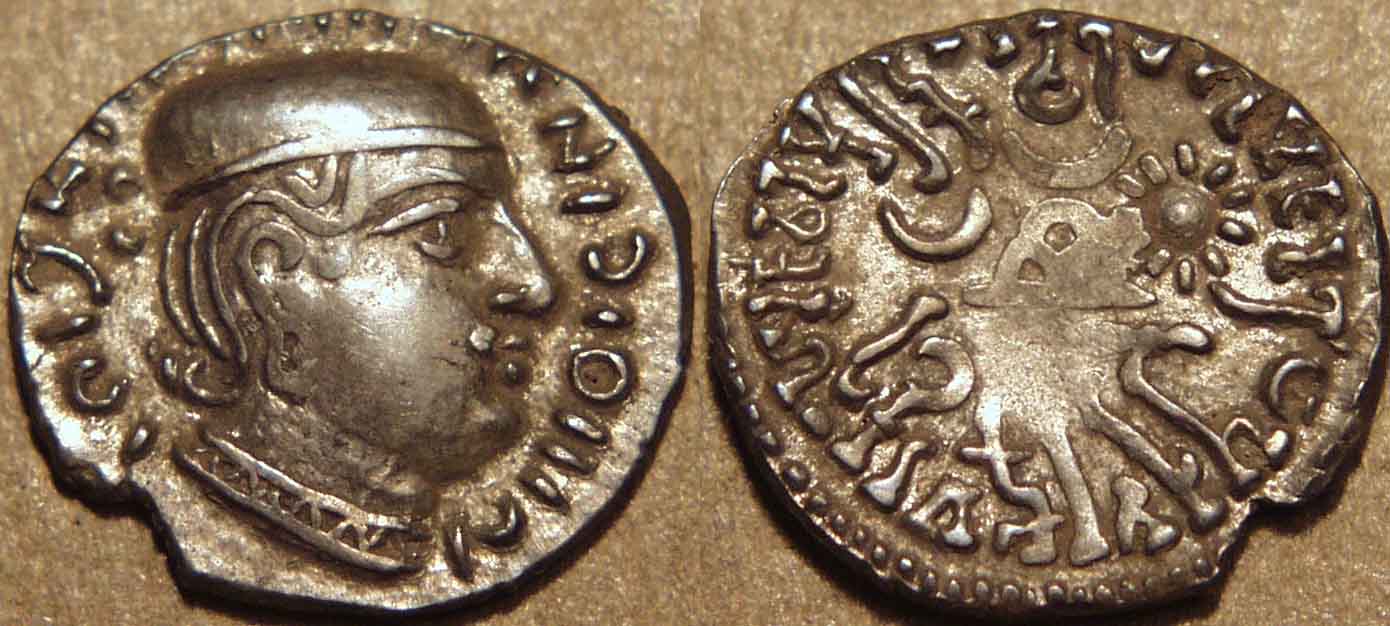
|
Jīvadāman, as mahakshatrapa, silver drachm, "mint A"
dated S. 119 (=197 CE)
Head of king right, blundered Greek legend around /
Chaitya (3-arched hill), river below, crescent moon and sun above, Brahmi legend around
Rajno Mahakshatrapasa Damajadasriyaputrasa Rajno Mahakshatrapasa Jivadamna

|
 |
This coin of Jīvadāman is very similar to the British Museum coin on the basis of which Rapson
developed his two-reign theory; indeed the obverse dies of this coin and the BM coin may be the same. They were clearly minted at approximately the same time. Now although
the date is not fully legible on this coin either, there is clearly a 10 following the symbol for 100, thereby ruling out the possibility that Rapson's coin was dated 100-103. Further,
this coin is stylistically very similar to the Rudrasimha coin illustrated above. The portrait style is very close and even the blundered Greek legend looks very similar. It seems
quite clear that this coin and the Rudrasimha coin were also made at approximately the same time. Since the date on the Rudrasimha coin is 119, it is almost certain that 119
is also the date of the Jīvadāman coin. Indeed, there is the hint of the bottom part of the number 9 in the date on the Jīvadāman coin.
|
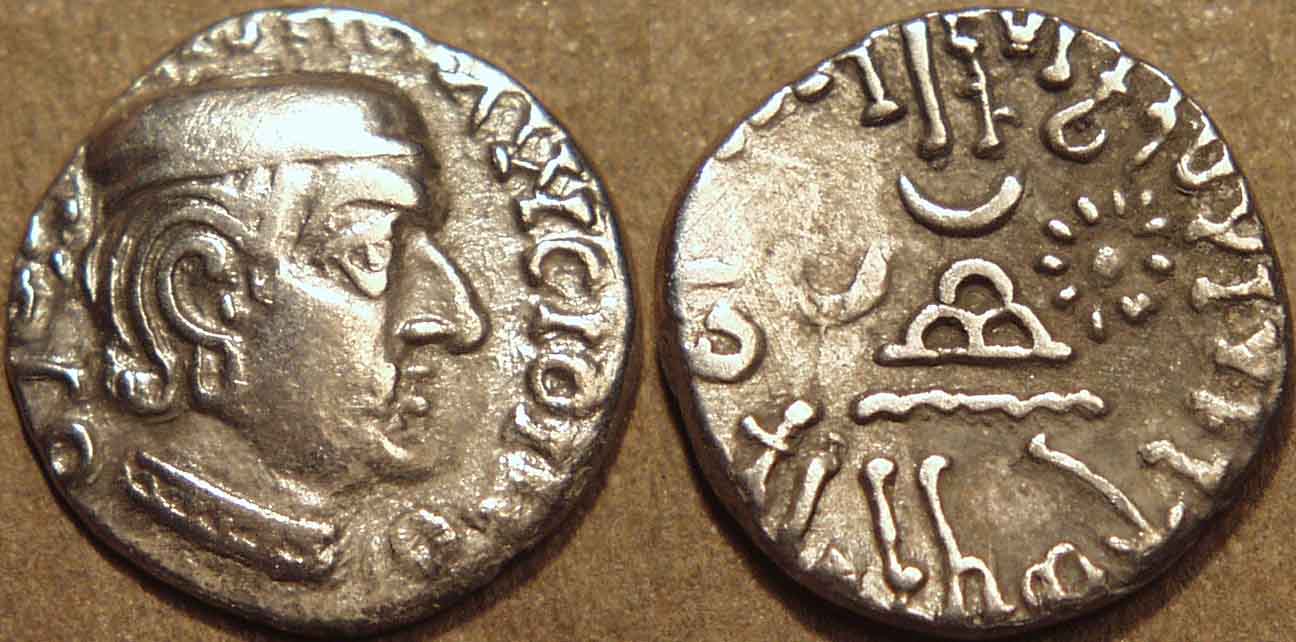
|
Jīvadāman, as mahakshatrapa, silver drachm, "mint A"
dated S. 120 (=198 CE)
Head of king right, blundered Greek legend around /
Chaitya (3-arched hill), river below, crescent moon and sun above, Brahmi legend around
Rajno Mahakshatrapasa Damajadasriyaputrasa Rajno Mahakshatrapasa Jivadamna
|
 |
A coin from mint A dated 120.
|
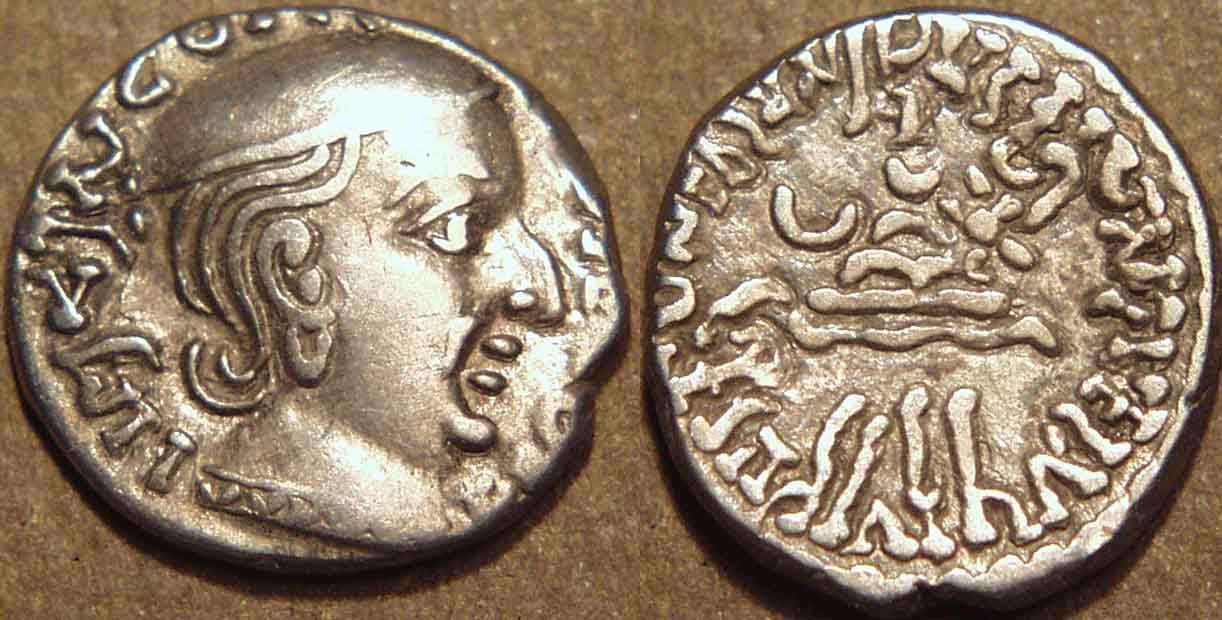
|
Jīvadāman, as mahakshatrapa, silver drachm, "mint B"
dated S. 119 (=197 CE)
Head of king right, blundered Greek legend around /
Chaitya (3-arched hill), river below, crescent moon and sun above, Brahmi legend around
Rajno Mahakshatrapasa Damajadasaputrasa Rajno Mahakshatrapasa Jivadamasa

|
 |
A coin from mint B dated 119. Note that there is a Brahmi letter sa after the date, not seen normally on coins of the
Western Kshatrapas. Presumably it stands for samvat (year).
|

|
Jīvadāman, as mahakshatrapa, silver drachm, "mint B"
dated S. 120 (=198 CE)
Head of king right, blundered Greek legend around /
Chaitya (3-arched hill), river below, crescent moon and sun above, Brahmi legend around
Rajno Mahakshatrapasa Damajadasaputrasa Rajno Mahakshatrapasa Jivadamasa
|
 |
A coin from mint B dated 120.
|
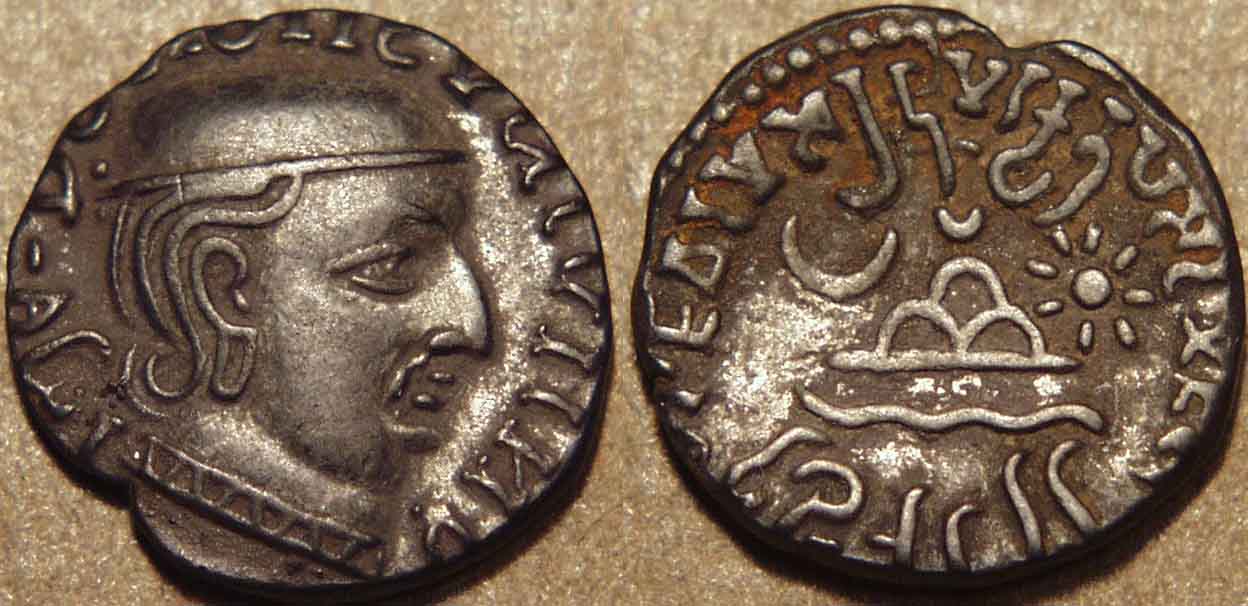
|
Jīvadāman, as mahakshatrapa, silver drachm, "mint B"
dated S. 121 (=199 CE)
Head of king right, blundered Greek legend around /
Chaitya (3-arched hill), river below, crescent moon and sun above, Brahmi legend around
Rajno Mahakshatrapasa Damajadasaputrasa Rajno Mahakshatrapasa Jivadamasa
|
 |
The first known coin of Jīvadāman dated 121. It demonstrates that Jīvadāman's reign lasted into
that year.
|
|
|